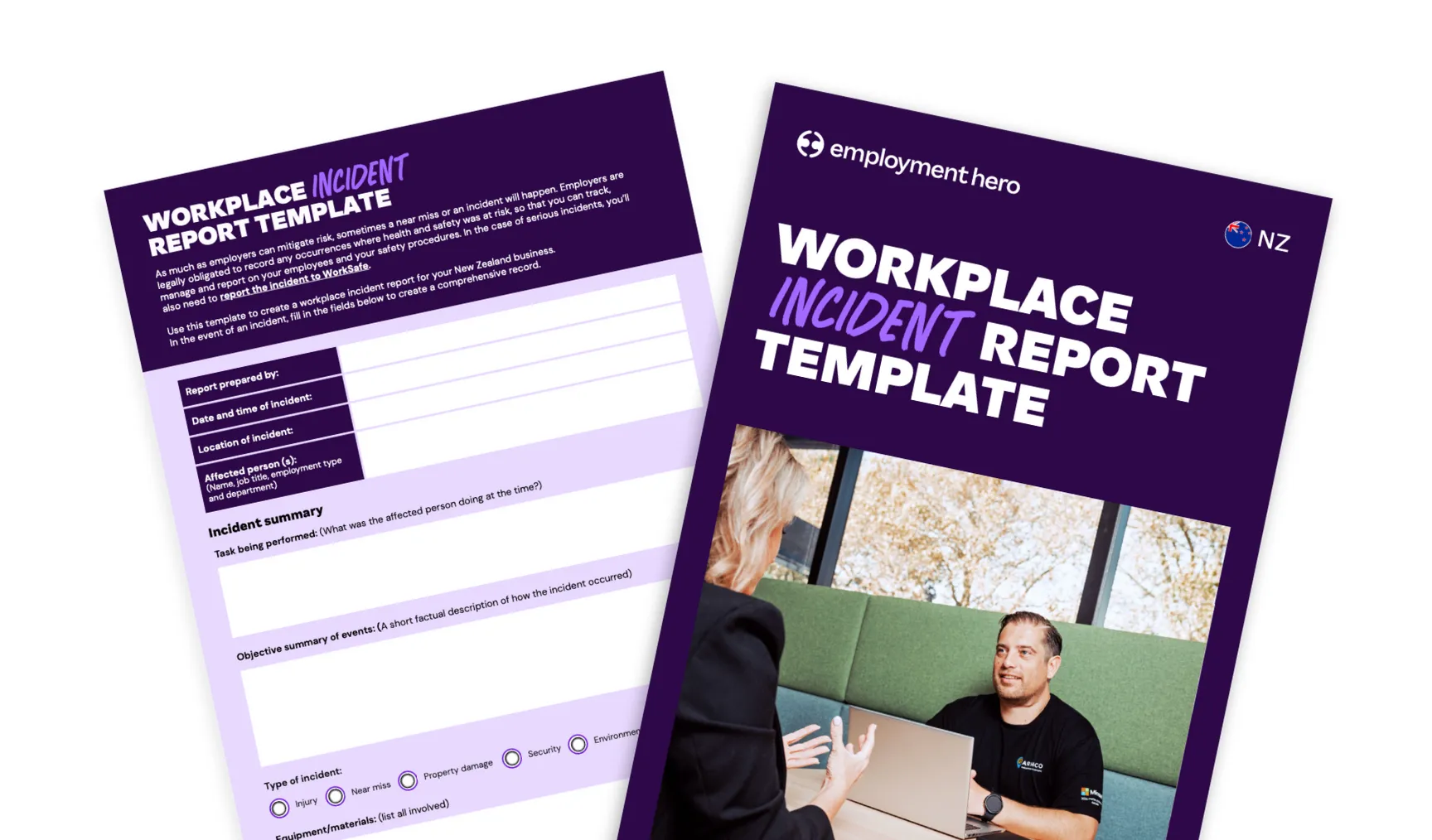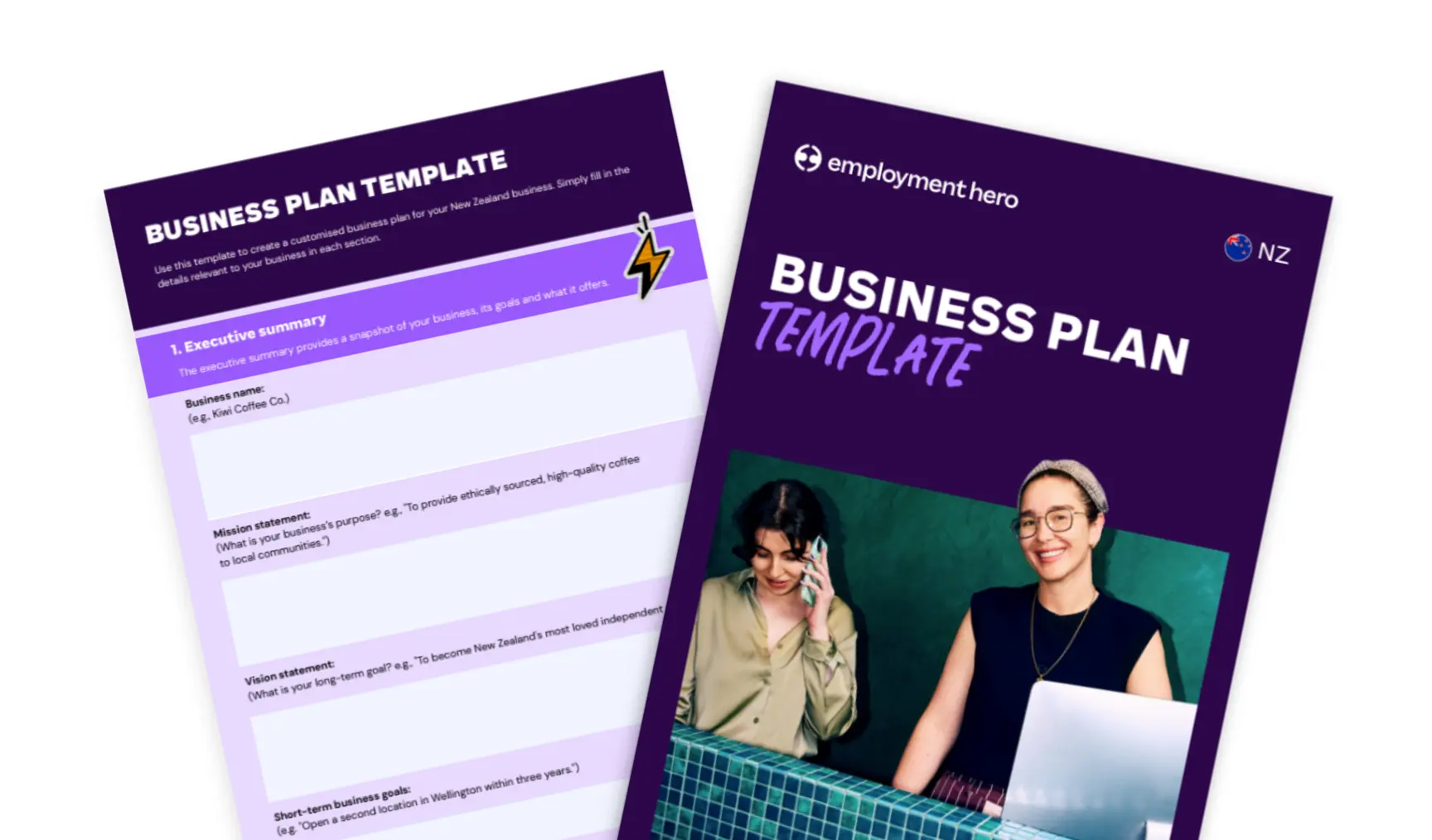Employment Agreements NZ Factsheet
Published
Employment Agreements NZ Factsheet
A written employment agreement forms the basis of a good employment relationship. It helps set the expectations of the role and acts as the first point of call in the event of any conflict.
What is in the NZ employment agreement factsheet?
In New Zealand, if you do not provide your employees with a written employment agreement, you may be liable to pay a fine of $1000 per employee. You may also be without legal standing in the case of a conflict.
We’ve developed this factsheet to help you understand the ins and outs of New Zealand employee agreements and help you avoid costly mistakes.
Disclaimer: The information in this guide is relevant as at 12 October 2022, and has been prepared by Employment Hero Pty Ltd ABN (11 160 047 709) (Employment Hero). The views expressed herein are general information only and are provided in good faith to assist employers and their employees. The Information is based on data supplied by third parties. While such data is believed to be accurate, it has not been independently verified and no warranties are given that it is complete, accurate, up to date or fit for the purpose for which it is required. Employment Hero does not accept responsibility for any inaccuracy in such data and is not liable for any loss or damages arising either directly or indirectly as a result of reliance on, use of or inability to use any information provided in this written guide.
Download the Employment Agreements NZ Factsheet now.
Is a written employment agreement always necessary?
It’s necessary to issue a written employment agreement for every employee if you want to remain compliant and avoid a fine. This applies whether they’re a permanent team member, a fixed-term employee or a casual employee. Written employment contracts form the basis of a strong working relationship and provide protection for both the employer and employee. They should be your first step as you bring a new employee on board.
It doesn’t have to be complicated either – most businesses will have similar agreements for all their staff. Business leaders and HR professionals who are short on time might want to consider creating a template agreement that they can customise with each new employee.
What is an individual employment agreement?
An individual employment agreement is between one single employee and their new employer. Verbal or written acceptance, as well as electronic signatures, are still acceptable.
The individual employment agreement should include the terms and conditions of employment, and be agreed before any work is started by the employee. Employers must keep a copy of the employment agreement, and employees are entitled to a copy if they request one.
Are there other types of employment agreements?
Yes. In New Zealand, there is one other type alongside the individual employment agreement – a collective employment agreement. These agreements apply to employees who are members of unions, and are negotiated between registered unions and employers.
A collective agreement doesn’t need to be reassessed with each new employee. A new employee who is part of a union can agree to the terms of conditions of an existing collective agreement. There is also the possibility of additional individual terms, which must be put in writing and signed by both the employer and employee.

What must you include in an employment agreement?
In our guide, we’ve included a checklist of the ten key elements to include in employment agreements, including a description of the role, the wage rate and whether they’re a fixed term employee or casual employee. Download our factsheet to see the full checklist.
While those ten things are crucial, employers have the option to add additional terms into their employment agreements. This could include guidance around sick leave, probation periods or notice periods.
Finally, minimum rights for employees, such as the minimum wage and national annual holiday allowance are legal requirements. Even if they’re not included in an employment agreement, they still apply in the working relationship.
What are the reasons for terminating an employment relationship?
If an employer wishes to terminate or dismiss an employment relationship, they must first act in good faith and follow a reasonable process. If employers are shown to have acted unfairly, employees can make a personal grievance claim to the Employment Relations Authority.
Their reasons for dismissal could include the following:
- Serious or repeated misconduct
- Performance issues
- Redundancy
- Incompatibility
- Incapacity
If an employee is dismissed outside a probation or trial period, they can ask the employer for a written description of the reasons for termination. The employer has to provide this within 14 days of the request being made.
Most importantly if you are an employer who is considering terminating an employment relationship, seek legal advice first. Many businesses have found themselves fined for wrongful dismissal or personal grievances, so it’s crucial that you take compliant steps in setting out reasonable grounds for termination.
Who is responsible for the Employment Relations Act?
The Employment Relations Act 2000 is the legislation that makes employment agreements compulsory for all New Zealand employers. It is administered by the Ministry of Business Innovation and Employment (MBIE). Along with legal advice, MBIE should be your first port of call in any employment queries or issues.
The Act also covers a vast array of employer obligations, including the legal backdrop for relationships with unions and recommended processes for personal grievance and mediation. When passed into law, it also established the Employment Court and Employment Relations Authority, which focus on employment relationship problems.
Learn more about hiring compliance
When it comes to hiring compliance, there’s lots to be across and plenty of risk involved. However, if you find out what your rights and options are as an employer, you can hire new employees with confidence.
For more points to consider, check out our Guide to HR Compliance.
Download the factsheet now
Related Resources
-
 Read more: Incident report template NZ: free download for businesses
Read more: Incident report template NZ: free download for businessesIncident report template NZ: free download for businesses
Download our free NZ incident report template. Record and report workplace incidents correctly under HSWA and ACC requirements.
-
 Read more: Serious misconduct in New Zealand: What employers must know
Read more: Serious misconduct in New Zealand: What employers must knowSerious misconduct in New Zealand: What employers must know
Learn what serious misconduct means under NZ law, common examples, and how to manage the process legally and fairly. Protect…
-
 Read more: Free business plan template for New Zealand business owners
Read more: Free business plan template for New Zealand business ownersFree business plan template for New Zealand business owners
Published Published Starting and running a business is a journey that needs direction. That’s why a well-crafted business plan is…





















